| View previous topic :: View next topic |
| Author |
Message |
Kuja
Joined: 20 Feb 2022
Posts: 9
|
 Posted: Sun Feb 20, 2022 2:55 pm Post subject: Rodenstock Rodagon 105/5.6 field curvature at 1:1 ratio? Posted: Sun Feb 20, 2022 2:55 pm Post subject: Rodenstock Rodagon 105/5.6 field curvature at 1:1 ratio? |
 |
|
Kuja wrote:
Hello everybody, 
I'm in the process of digitizing my film archives and I'm trying to get the best possible results.
I've been using my Canon 5Ds with a lens adapter and a vintage slide duplicating rig, consisting of bellows and a film holder.
Something similar to this:
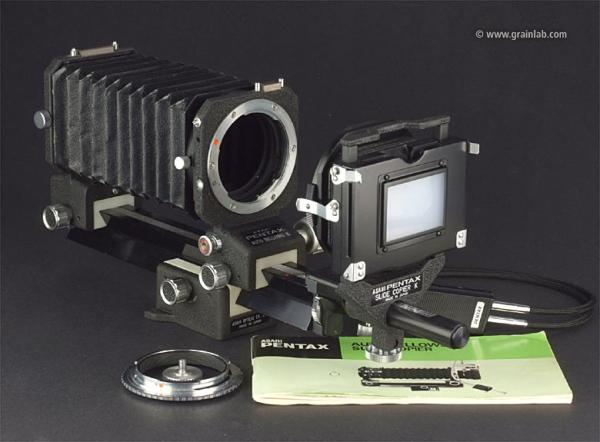
For this kind of use, the best possible flat field performance is the paramount. Low chromatic aberrations are also desireable
The lens that I'm using at the moment is a Pentax SMC 100mm f/4 Macro.
The Pentax is very sharp in the center with the film grain structure that is clear and defined.
In the corners the grain is still visible, but is progressively getting mushier towards the extreme corners, where it is kind of OK and acceptable, but could be better.
I have an oportunity to buy a Rodenstock Rodagon 105/5.6 enlarging lens for a fair price, but it is very hard to find any info on the net describing its flat field performance in the 1:1 range.
Does any forum member have the first hand experience with the Rodagon 105/5.6 in this kind of application - 1:1 copy work that requires the best possible flat field performance and low CA?
Thanks in advance,
Aleksandar
PS
This is the exact model of the lens in question:

 |
|
| Back to top |
|
 |
Ray Parkhurst


Joined: 04 Jul 2011
Posts: 504
Location: Santa Clara, CA, USA
|
 Posted: Wed Feb 23, 2022 3:16 am Post subject: Re: Rodenstock Rodagon 105/5.6 field curvature at 1:1 ratio? Posted: Wed Feb 23, 2022 3:16 am Post subject: Re: Rodenstock Rodagon 105/5.6 field curvature at 1:1 ratio? |
 |
|
Ray Parkhurst wrote:
| Kuja wrote: |
Hello everybody, 
I'm in the process of digitizing my film archives and I'm trying to get the best possible results.
I've been using my Canon 5Ds with a lens adapter and a vintage slide duplicating rig, consisting of bellows and a film holder.
Something similar to this:
For this kind of use, the best possible flat field performance is the paramount. Low chromatic aberrations are also desireable
The lens that I'm using at the moment is a Pentax SMC 100mm f/4 Macro.
The Pentax is very sharp in the center with the film grain structure that is clear and defined.
In the corners the grain is still visible, but is progressively getting mushier towards the extreme corners, where it is kind of OK and acceptable, but could be better.
I have an oportunity to buy a Rodenstock Rodagon 105/5.6 enlarging lens for a fair price, but it is very hard to find any info on the net describing its flat field performance in the 1:1 range.
Does any forum member have the first hand experience with the Rodagon 105/5.6 in this kind of application - 1:1 copy work that requires the best possible flat field performance and low CA? |
The Rodenstock was not designed for 1:1 reproduction, and performance falls off rapidly below 1:2. I'm not sure about curvature but sharpness is degraded on APS-C even at 0.7:1. There are many better lenses for repro/copy work at 1:1.
_________________
...See my Numismatic Photography website at: http://www.macrocoins.com
...Primary Studio Cameras: Sony A7Rm4 and Canon HRT2i
...Go-To studio lenses: Nikon 95mm and 105mm Printing-Nikkors; Schneider 85mm Macro-Varon; Nikon 5x, 10x, and 20x Measuring Microscope Objectives; Mitutoyo BD Plan Apo 50x Microscope Objective
...My Go-To Walkaround Lenses: Laowa 60mm Super Macro; Nikon 28-105D (in manual mode for macro); |
|
| Back to top |
|
 |
monopix
Joined: 07 Feb 2010
Posts: 32
|
 Posted: Wed Feb 23, 2022 10:53 am Post subject: Posted: Wed Feb 23, 2022 10:53 am Post subject: |
 |
|
monopix wrote:
No experience with that specific lens but I used another similar one (can't remember exactly which) and it was 'just' acceptable at f/11. I then changed to a Zeiss 100mm f/2.8 Makro Planar - WOW! What a difference. At f/2.8 it blew the enlarger lens out of the water. The Makro Planar may not suit you as it's a Contax/Yashica mount but I think the lesson is, find a lens designed to go to 1:1 and, if it's a Planar design, all the better. The other thing with a true macro lens is, you won't need the bellows which makes the setup much easier and less opportunity to get misalignment of the planes.
_________________
Insert pointless list of equipment here. |
|
| Back to top |
|
 |
eggplant


Joined: 27 May 2020
Posts: 517
|
 Posted: Wed Feb 23, 2022 1:12 pm Post subject: Re: Rodenstock Rodagon 105/5.6 field curvature at 1:1 ratio? Posted: Wed Feb 23, 2022 1:12 pm Post subject: Re: Rodenstock Rodagon 105/5.6 field curvature at 1:1 ratio? |
 |
|
eggplant wrote:
| Ray Parkhurst wrote: |
| Kuja wrote: |
Hello everybody, 
I'm in the process of digitizing my film archives and I'm trying to get the best possible results.
I've been using my Canon 5Ds with a lens adapter and a vintage slide duplicating rig, consisting of bellows and a film holder.
Something similar to this:
For this kind of use, the best possible flat field performance is the paramount. Low chromatic aberrations are also desireable
The lens that I'm using at the moment is a Pentax SMC 100mm f/4 Macro.
The Pentax is very sharp in the center with the film grain structure that is clear and defined.
In the corners the grain is still visible, but is progressively getting mushier towards the extreme corners, where it is kind of OK and acceptable, but could be better.
I have an oportunity to buy a Rodenstock Rodagon 105/5.6 enlarging lens for a fair price, but it is very hard to find any info on the net describing its flat field performance in the 1:1 range.
Does any forum member have the first hand experience with the Rodagon 105/5.6 in this kind of application - 1:1 copy work that requires the best possible flat field performance and low CA? |
The Rodenstock was not designed for 1:1 reproduction, and performance falls off rapidly below 1:2. I'm not sure about curvature but sharpness is degraded on APS-C even at 0.7:1. There are many better lenses for repro/copy work at 1:1. |
What about reversed? |
|
| Back to top |
|
 |
Ray Parkhurst


Joined: 04 Jul 2011
Posts: 504
Location: Santa Clara, CA, USA
|
 Posted: Wed Feb 23, 2022 3:29 pm Post subject: Re: Rodenstock Rodagon 105/5.6 field curvature at 1:1 ratio? Posted: Wed Feb 23, 2022 3:29 pm Post subject: Re: Rodenstock Rodagon 105/5.6 field curvature at 1:1 ratio? |
 |
|
Ray Parkhurst wrote:
| eggplant wrote: |
What about reversed? |
Reversing of enlarging lenses works when the magnification is higher than 1:1, but is generally no benefit at 1:1 and is detrimental at lower than 1:1. I have a couple of the Rodagon 105's but have never tested them reversed since I had no reason to shoot with them above 1:1, so I can't say for sure on this lens, but other types I have tested have followed the "rule".
_________________
...See my Numismatic Photography website at: http://www.macrocoins.com
...Primary Studio Cameras: Sony A7Rm4 and Canon HRT2i
...Go-To studio lenses: Nikon 95mm and 105mm Printing-Nikkors; Schneider 85mm Macro-Varon; Nikon 5x, 10x, and 20x Measuring Microscope Objectives; Mitutoyo BD Plan Apo 50x Microscope Objective
...My Go-To Walkaround Lenses: Laowa 60mm Super Macro; Nikon 28-105D (in manual mode for macro); |
|
| Back to top |
|
 |
Kuja
Joined: 20 Feb 2022
Posts: 9
|
 Posted: Wed Feb 23, 2022 8:52 pm Post subject: Posted: Wed Feb 23, 2022 8:52 pm Post subject: |
 |
|
Kuja wrote:
Thanks for the replies!
I bought it anyway, since the price was ok (around $40).
I have read on this forum and elsewhere that some people are using this lens for film "scanning" with very good results, so I thought that it was worth a try.
The lens is coming in tomorrow, so we'll see. If the results are not good for negative copy work, I'll use it on my enlarger.
I will also try the Sigma 70mm ART macro lens that is receiving rave reviews. |
|
| Back to top |
|
 |
Kuja
Joined: 20 Feb 2022
Posts: 9
|
 Posted: Wed Feb 23, 2022 9:55 pm Post subject: Posted: Wed Feb 23, 2022 9:55 pm Post subject: |
 |
|
Kuja wrote:
Sigma 70mm ART macro on test:
https://www.closeuphotography.com/1x-test-2020/2019/12/13/1x-magnification-test-2020 |
|
| Back to top |
|
 |
Kuja
Joined: 20 Feb 2022
Posts: 9
|
 Posted: Wed Feb 23, 2022 11:15 pm Post subject: Re: Rodenstock Rodagon 105/5.6 field curvature at 1:1 ratio? Posted: Wed Feb 23, 2022 11:15 pm Post subject: Re: Rodenstock Rodagon 105/5.6 field curvature at 1:1 ratio? |
 |
|
Kuja wrote:
| Ray Parkhurst wrote: |
| There are many better lenses for repro/copy work at 1:1. |
I know.
Or at least heard, since I have very little first hand experience with the really good and expensive macro lenses. 
One of the often mentioned lenses for 1:1 duplicating work is the Apo Rodagon D 75/4, but I decided to give the Rodagon 105/5,6 a chance after reading encouraging posts such as this:
| ForenSeil wrote: |
Lens and lightsource are important for this technique! After testing about 10 lenses I found Apo-Rodagon-R(-D) 75/4 @F5.6 works best, closely followed by much cheaper Rodagon 105/5.6 @F8. Both better than the normal 100mm Macro lenses I tried (Cosina 100/3.5, Minolta MD 100/4, Minolta MD 50/3.5 and maybe more).
All 50mm enlarger lenses (Rodagon 50/2.8,....) or normal lenses (Tessar 50/2.8, Helios 44-2 58/2,...) on tubes I tested didn't work well for me (low contrast, curved field of sharpness, flaring/haze, low fine details, low sharpness...). Only exception (visibly better than El Nikkor 50 and Rodagon 50) was Noritsu 50.7/9.5, but it was inferior to Rodagon 105/5.6 for this. |
|
|
| Back to top |
|
 |
Ray Parkhurst


Joined: 04 Jul 2011
Posts: 504
Location: Santa Clara, CA, USA
|
 Posted: Thu Feb 24, 2022 2:30 am Post subject: Re: Rodenstock Rodagon 105/5.6 field curvature at 1:1 ratio? Posted: Thu Feb 24, 2022 2:30 am Post subject: Re: Rodenstock Rodagon 105/5.6 field curvature at 1:1 ratio? |
 |
|
Ray Parkhurst wrote:
[quote="Kuja"]
One of the often mentioned lenses for 1:1 duplicating work is the Apo Rodagon D 75/4, but I decided to give the Rodagon 105/5,6 a chance after reading encouraging posts such as this:
| ForenSeil wrote: |
...After testing about 10 lenses I found Apo-Rodagon-R(-D) 75/4 @F5.6 works best, closely followed by much cheaper Rodagon 105/5.6 @F8... |
Many lenses will work "OK" at f8, which is EA16 at 1:1 magnification. Problem is that sharpness/resolution across the frame is degraded, so you are not going to be reproducing all the detail in the original image. Even at f5.6 (EA11) you will lose some detail, but it will for sure be sharper than shooting at f8. What you really want for copy work is a lens that is good across the frame at f4 (EA8), which will probably give you as sharp an image as can be achieved, with your camera as the limiting factor.
_________________
...See my Numismatic Photography website at: http://www.macrocoins.com
...Primary Studio Cameras: Sony A7Rm4 and Canon HRT2i
...Go-To studio lenses: Nikon 95mm and 105mm Printing-Nikkors; Schneider 85mm Macro-Varon; Nikon 5x, 10x, and 20x Measuring Microscope Objectives; Mitutoyo BD Plan Apo 50x Microscope Objective
...My Go-To Walkaround Lenses: Laowa 60mm Super Macro; Nikon 28-105D (in manual mode for macro); |
|
| Back to top |
|
 |
Kuja
Joined: 20 Feb 2022
Posts: 9
|
 Posted: Thu Feb 24, 2022 12:49 pm Post subject: Posted: Thu Feb 24, 2022 12:49 pm Post subject: |
 |
|
Kuja wrote:
Thanks a lot Ray! 
What would be your recomendations for a lens for film copy work?
Apart from copying 35mm film, I'm also planning to copy my 6x6 and 6x9 medium format negatives, and I even have a small quantity of 4x5" negatives.
I do not have thousands dollars to spend on some exotic glass like your Printing Nikkor. 
Even Apo Rodagon D 75/4 is on the verge of being too expensive for me, and it is said that it is designed exclusively for 1:1 copy work, so it might not work so well for 6x9 negatives which will require lower magnification to fill my camera's 35mm FF sensor.
What do you think of the Sigma 70mm/f2.8 Art Macro lens that I mentioned earlier? |
|
| Back to top |
|
 |
Himself

Joined: 01 Mar 2007
Posts: 3240
Location: Montreal
Expire: 2013-05-30
|
 Posted: Thu Feb 24, 2022 2:04 pm Post subject: Posted: Thu Feb 24, 2022 2:04 pm Post subject: |
 |
|
Himself wrote:
Try a Contax S-Planar 100/4. It's a dedicated bellows lens.
Maybe a bit cheaper than a Printing Nikkor.  
_________________
Moderator Himself |
|
| Back to top |
|
 |
Ray Parkhurst


Joined: 04 Jul 2011
Posts: 504
Location: Santa Clara, CA, USA
|
 Posted: Thu Feb 24, 2022 4:55 pm Post subject: Posted: Thu Feb 24, 2022 4:55 pm Post subject: |
 |
|
Ray Parkhurst wrote:
| Kuja wrote: |
Thanks a lot Ray! 
What would be your recomendations for a lens for film copy work?
Apart from copying 35mm film, I'm also planning to copy my 6x6 and 6x9 medium format negatives, and I even have a small quantity of 4x5" negatives.
I do not have thousands dollars to spend on some exotic glass like your Printing Nikkor. 
Even Apo Rodagon D 75/4 is on the verge of being too expensive for me, and it is said that it is designed exclusively for 1:1 copy work, so it might not work so well for 6x9 negatives which will require lower magnification to fill my camera's 35mm FF sensor.
What do you think of the Sigma 70mm/f2.8 Art Macro lens that I mentioned earlier? |
If you're planning on doing larger formats you might consider the Apo Rodagon D 75/4.5 M1:2 lens instead of the 75/4 M1:1 lens. It is designed for duplicating larger formats, but it does a great job at 1:1 as well.
I don't think a Sigma 70mm is much cheaper than either of the Rodagon D lenses.
_________________
...See my Numismatic Photography website at: http://www.macrocoins.com
...Primary Studio Cameras: Sony A7Rm4 and Canon HRT2i
...Go-To studio lenses: Nikon 95mm and 105mm Printing-Nikkors; Schneider 85mm Macro-Varon; Nikon 5x, 10x, and 20x Measuring Microscope Objectives; Mitutoyo BD Plan Apo 50x Microscope Objective
...My Go-To Walkaround Lenses: Laowa 60mm Super Macro; Nikon 28-105D (in manual mode for macro); |
|
| Back to top |
|
 |
Kuja
Joined: 20 Feb 2022
Posts: 9
|
 Posted: Thu Feb 24, 2022 6:49 pm Post subject: Posted: Thu Feb 24, 2022 6:49 pm Post subject: |
 |
|
Kuja wrote:
My new Rodagon 105/5.6 has finally arrived! 
I couldn't wait so I did a quick and dirty test.
Since I don't have a M39 adapter for my macro bellows yet,
and the Rodagon has a standard 49mm filter thread, I have mounted it reversed.
I guess that at 1:1 ratio, reversed or not makes little or no difference.

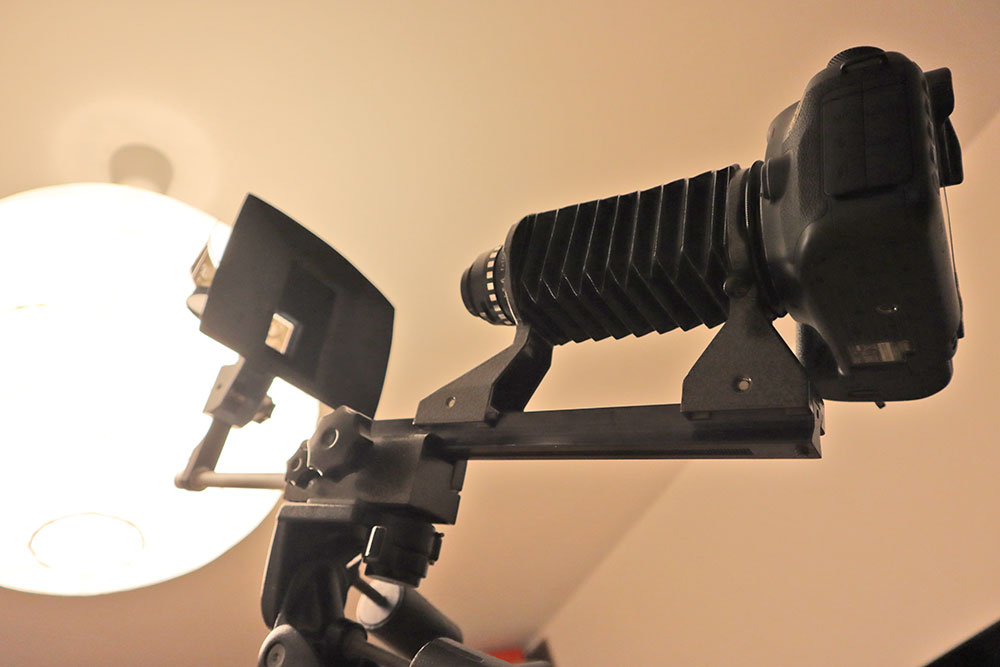
Last edited by Kuja on Thu Feb 24, 2022 8:26 pm; edited 1 time in total |
|
| Back to top |
|
 |
Kuja
Joined: 20 Feb 2022
Posts: 9
|
 Posted: Thu Feb 24, 2022 8:17 pm Post subject: Posted: Thu Feb 24, 2022 8:17 pm Post subject: |
 |
|
Kuja wrote:
After my initial excitement about getting the Rodagon 105/5.6,
I must admit that my heart had sunk a little bit after reading the comments here.
But after the quick test, I must say that I'm (extremely) pleasantly surprised!!! 
The Rodagon 105 is much better than my Pentax 100/4 macro!
I don't know how much better are the true 1:1 duplicating lenses since I have no experience with them,
but the results I got from the humble $40 Rodagon on my 50 megapixel Canon 5Ds,
to my untrained and inexperienced eyes, leave nothing much more to be desired.
I have discovered that the best aperture is f8.
The center of the negative is almost equally good at f5.6 and f8, corners are better at f8 and practically equal to the center,
at f11 there is a slight drop in quality across the frame.
Here is the downsized full test negative "scan" in Capture One software:
(Please bear in mind that these are JPEGs with compression, that the film is not perfectly flat in the film folder, that I have used a 2.5 sec exposure since the light source was the ceiling light (and very diffused at that), ...and that in these poor light conditions my focusing could be better.)
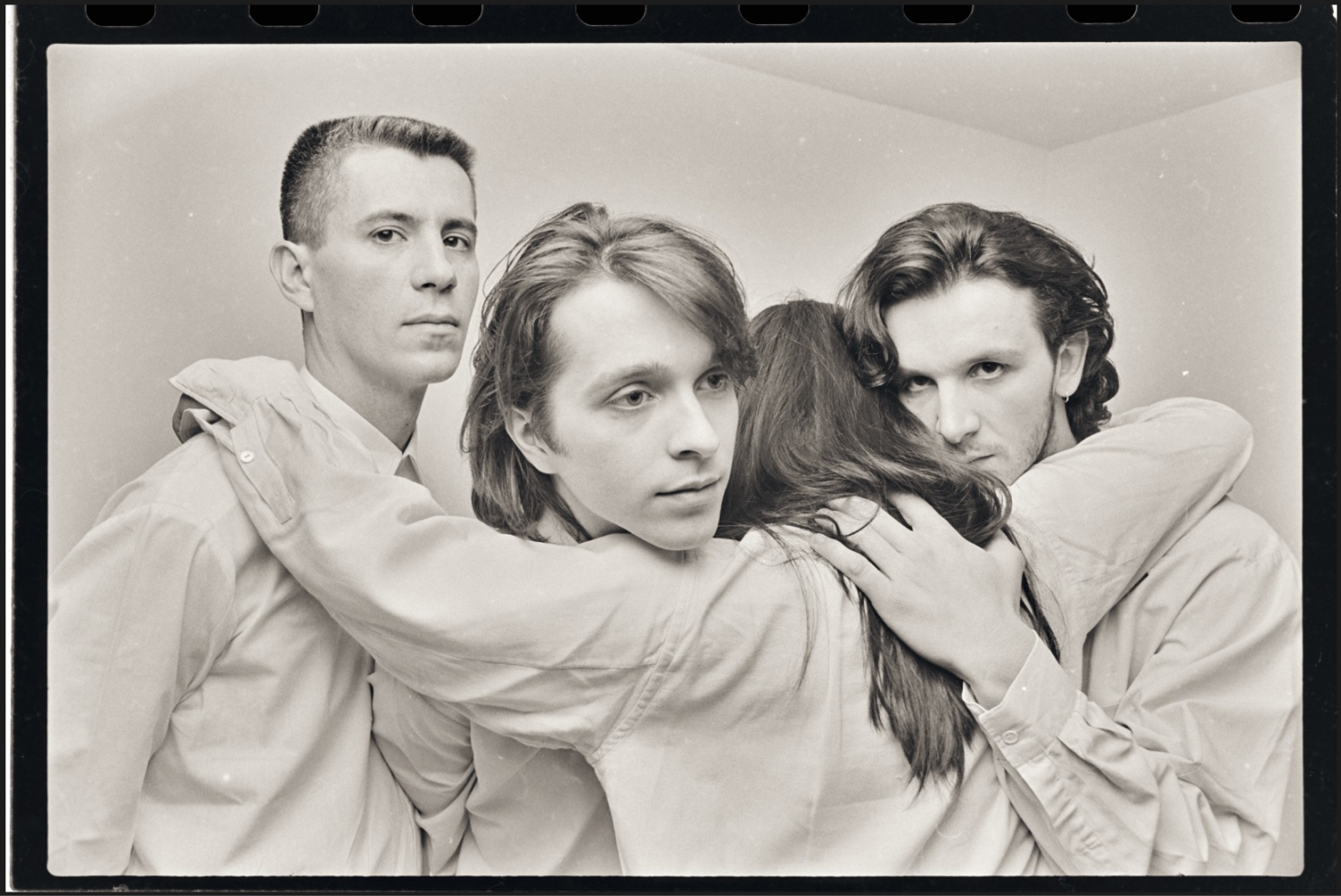
Here are few 100% crops close to the central portion of the negative.
(If you are reading this on a smaller screen, please click on the photos and use the "+" zoom loupe in order to view them at the full resolution!)
It seems that the actual taking lens and/or my focusing technique were not that good at the time when I took this photo, 
so the Rodagon is digging out all of the existing detail/information from the negative and more (in form of the film grain):

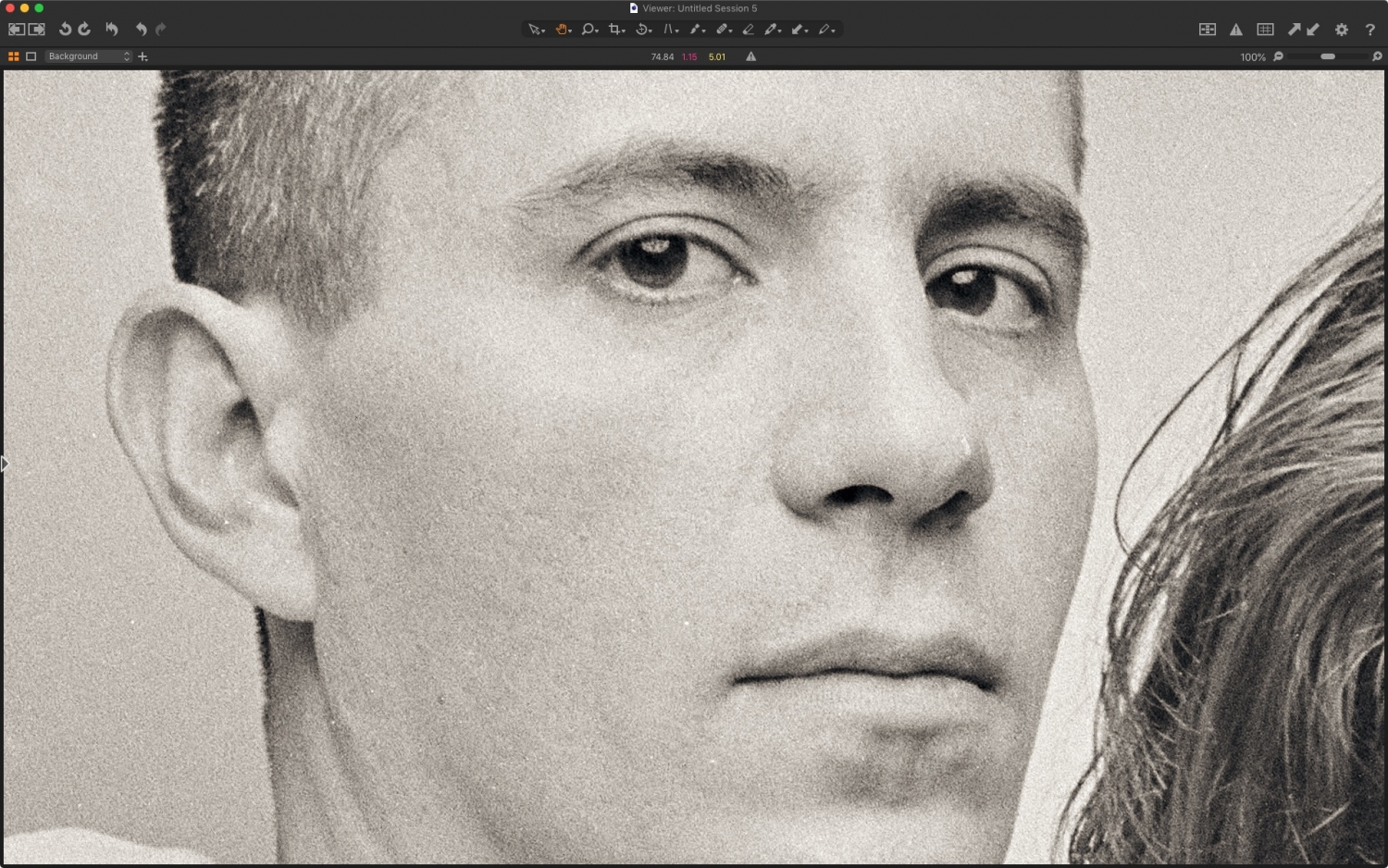
... And here are the extreme corners, all four of them. 
Notice the film grain structure, and how sharp are the film perforations, tiny dust hairs, dirt particles and specks on the clear film base.
To my eyes, this looks great! 
When I was printing these negatives 30 years ago on traditional B&W photo paper, I wasn't able to get such good results.
50 mpix file gives a 19x29 inch (around 50x75cm) print @300dpi.

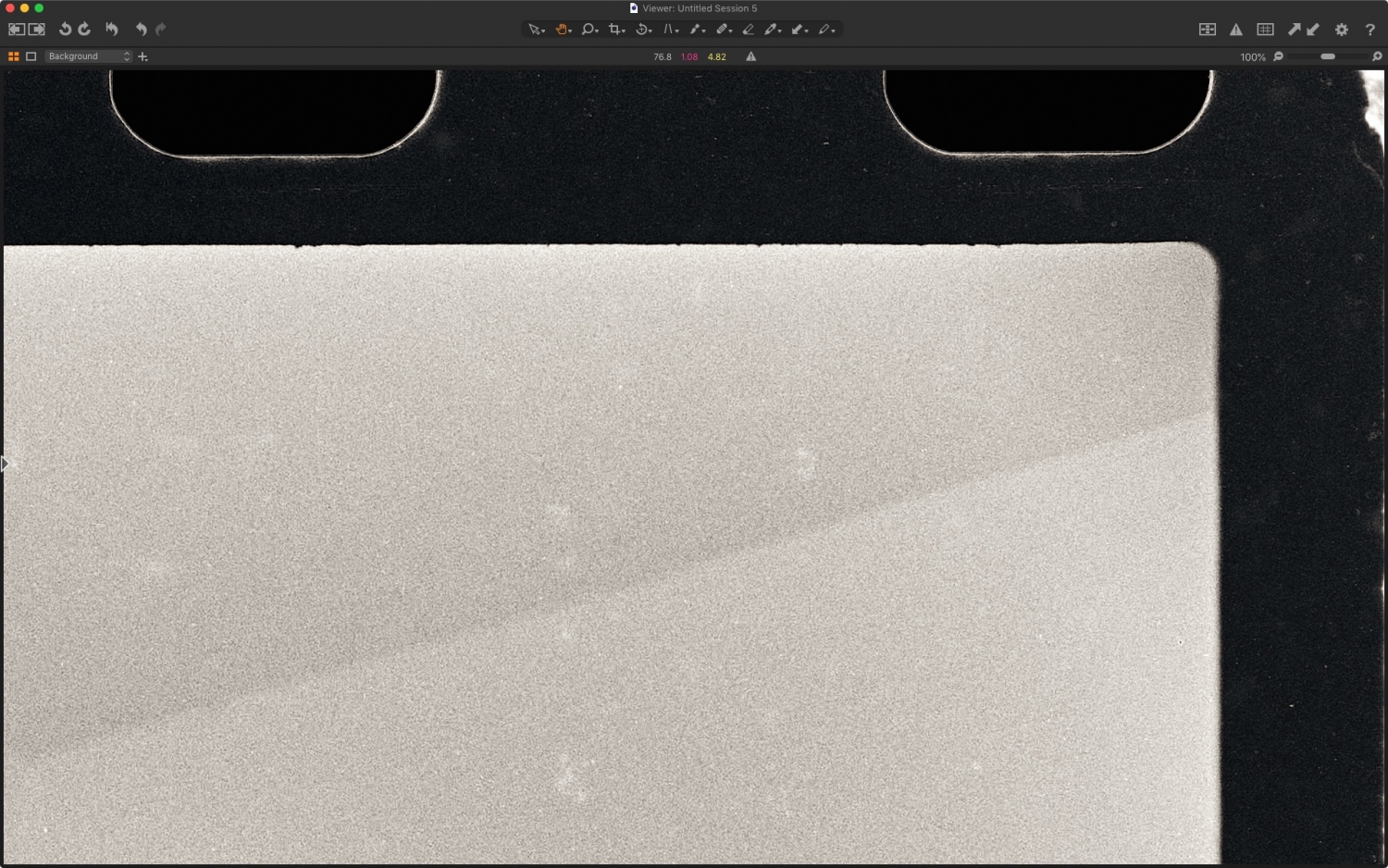
Notice how sharp are the edges of the mask of the film holder on the left side of the photo  : :
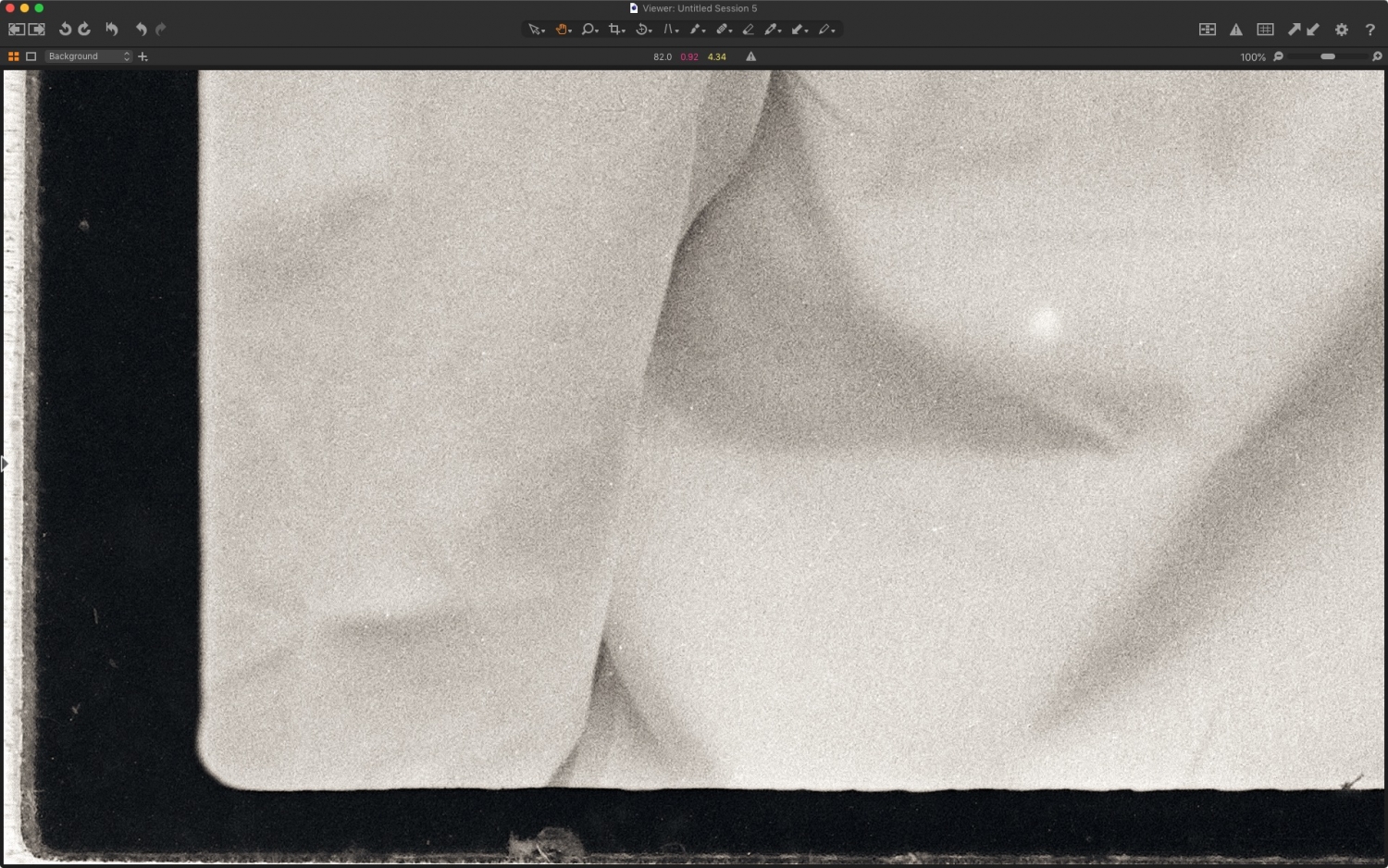
 |
|
| Back to top |
|
 |
Ray Parkhurst


Joined: 04 Jul 2011
Posts: 504
Location: Santa Clara, CA, USA
|
 Posted: Thu Feb 24, 2022 8:54 pm Post subject: Posted: Thu Feb 24, 2022 8:54 pm Post subject: |
 |
|
Ray Parkhurst wrote:
| Kuja wrote: |
After my initial excitement about getting the Rodagon 105/5.6,
I must admit that my heart had sunk a little bit after reading the comments here.
But after the quick test, I must say that I'm (extremely) pleasantly surprised!!! 
The Rodagon 105 is much better than my Pentax 100/4 macro!
I don't know how much better are the true 1:1 duplicating lenses since I have no experience with them,
but the results I got from the humble $40 Rodagon on my 50 megapixel Canon 5Ds,
to my untrained and inexperienced eyes, leave nothing much more to be desired.
I have discovered that the best aperture is f8.
The center of the negative is almost equally good at f5.6 and f8, corners are better at f8 and practically equal to the center,
at f11 there is a slight drop in quality across the frame.
Here is the downsized full test negative "scan" in Capture One software:
(Please bear in mind that these are JPEGs with compression, that the film is not perfectly flat in the film folder, that I have used a 2.5 sec exposure since the light source was the ceiling light (and very diffused at that), ...and that in these poor light conditions my focusing could be better.)
Here are few 100% crops close to the central portion of the negative.
It seems that the actual taking lens and/or my focusing technique were not that good at the time when I took this photo, 
so the Rodagon is digging out all of the existing detail/information from the negative and more (in form of the film grain):
And here are the extreme corners, all four of them. 
Notice the film grain structure, and how sharp are the film perforations, tiny dust hairs, dirt particles and specks on the clear film base.
To my eyes, this looks great! 
When I was printing these negatives 30 years ago on traditional B&W photo paper, I wasn't able to get such good results.
50 mpix file gives a 19x29 inch (around 50x75cm) print @300dpi.
Notice how sharp are the edges of the mask of the film holder on the left side of the photo  : :
|
Looks great! Perhaps the lens does better at 1:1 in reverse than forward? Long as it works, who cares?
_________________
...See my Numismatic Photography website at: http://www.macrocoins.com
...Primary Studio Cameras: Sony A7Rm4 and Canon HRT2i
...Go-To studio lenses: Nikon 95mm and 105mm Printing-Nikkors; Schneider 85mm Macro-Varon; Nikon 5x, 10x, and 20x Measuring Microscope Objectives; Mitutoyo BD Plan Apo 50x Microscope Objective
...My Go-To Walkaround Lenses: Laowa 60mm Super Macro; Nikon 28-105D (in manual mode for macro); |
|
| Back to top |
|
 |
Kuja
Joined: 20 Feb 2022
Posts: 9
|
 Posted: Sat Feb 26, 2022 9:10 pm Post subject: Posted: Sat Feb 26, 2022 9:10 pm Post subject: |
 |
|
Kuja wrote:
Maybe also a sample to sample variation could play a role, and this Rodagon might be a really good one?
I see that someone wrote with a graphite pencil "105,9" on its barrel,
as if the lens' focal lenght was precisely measured.
Maybe it went through some process of selection, who knows.
The most important thing is that I'm very happy. 
Now I only have to build a scanning rig for medium format negatives.
From the same seller I also got a fabulous vintage multi-format Durst Setoneg film holder, that will serve as the base for it. |
|
| Back to top |
|
 |
Kuja
Joined: 20 Feb 2022
Posts: 9
|
 Posted: Sat Feb 26, 2022 9:22 pm Post subject: Posted: Sat Feb 26, 2022 9:22 pm Post subject: |
 |
|
Kuja wrote:
Thank you all for your help! 
Special thanks goes to member @ForenSeil, whose posts inspired me to get the Rodagon 105/5.6.  |
|
| Back to top |
|
 |
|
|
|
You cannot post new topics in this forum
You cannot reply to topics in this forum
You cannot edit your posts in this forum
You cannot delete your posts in this forum
You cannot vote in polls in this forum
|
